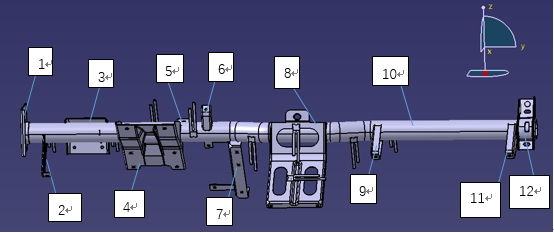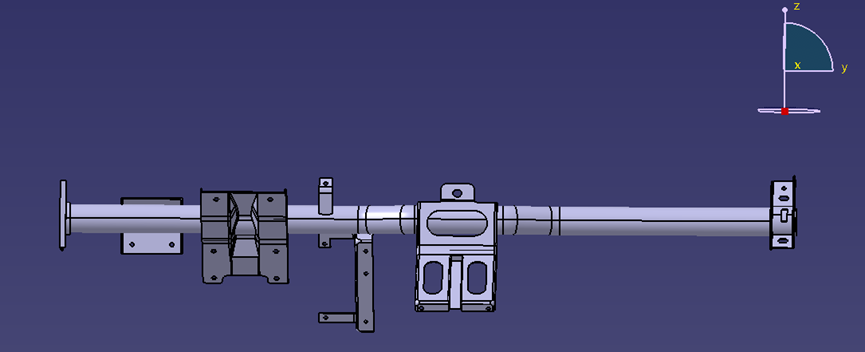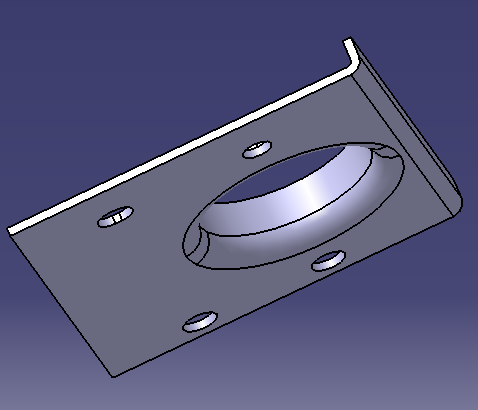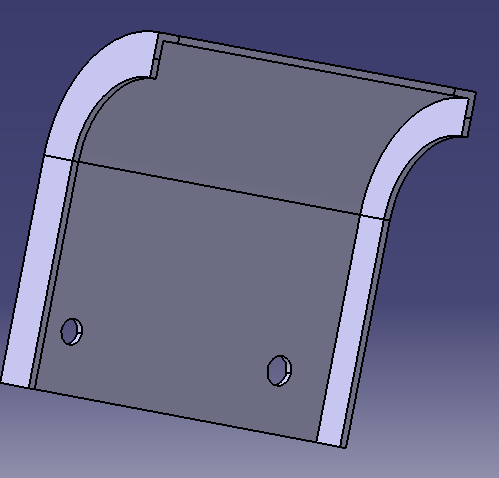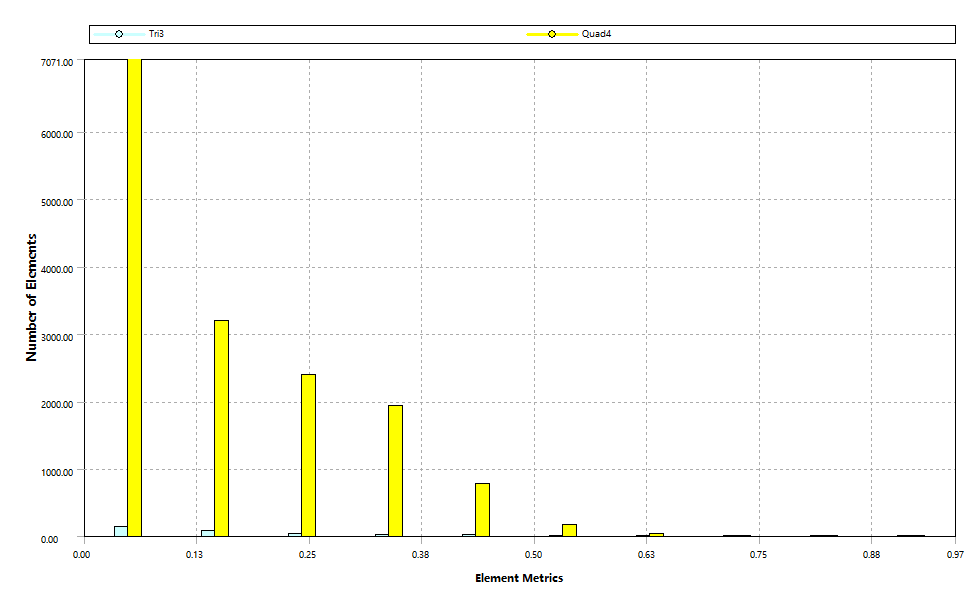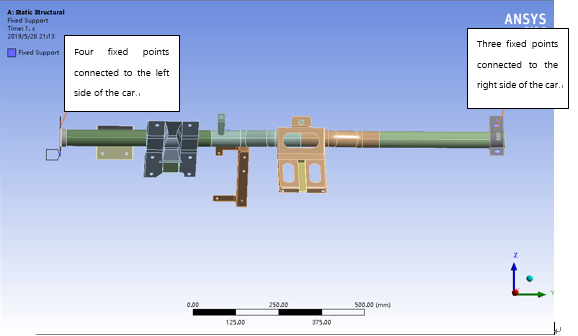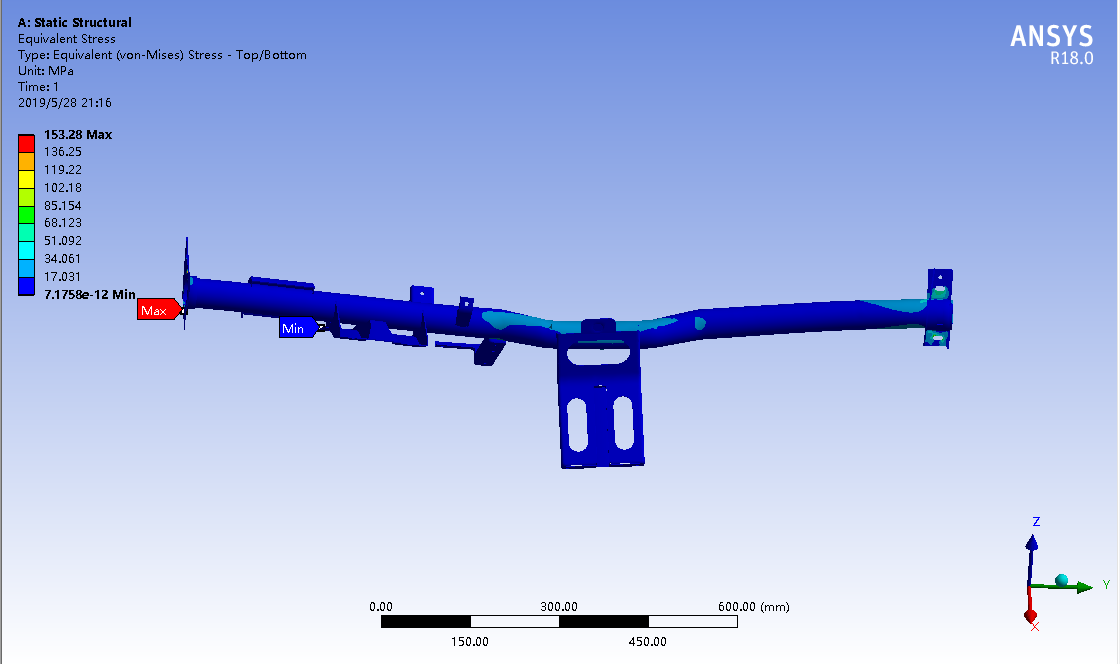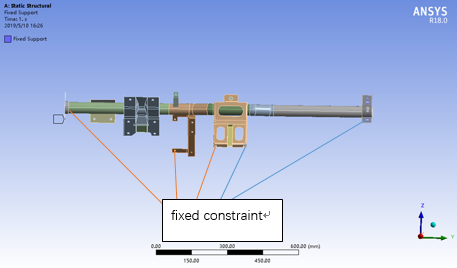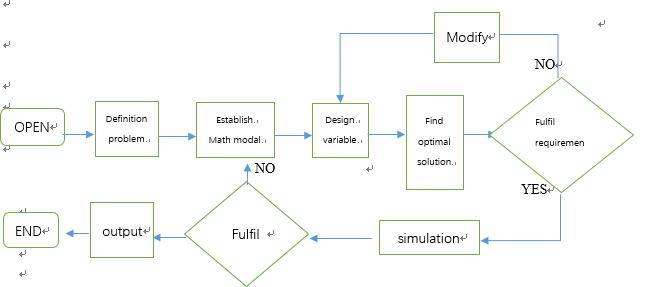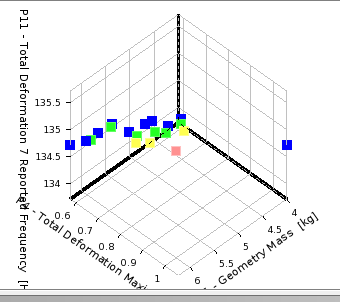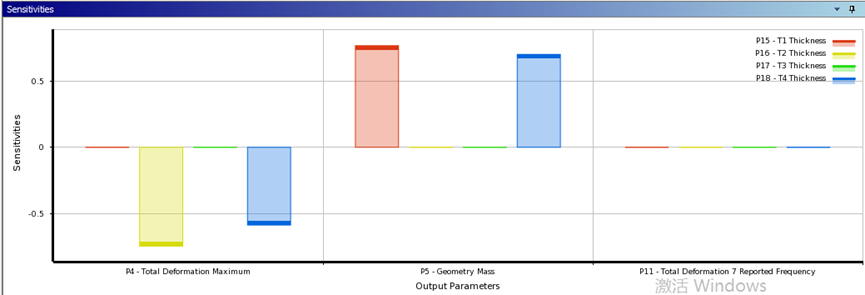某轻型货车仪表板横梁轻量化结构设计毕业论文
2020-02-13 22:42:26
Abstract
The lightweight design of automobiles is an important way to reduce vehicle emissions and improve the performance of all aspects of vehicles. It is also a recent research hotspot. Automotive lightweight design can generally be achieved in two ways. One is to use light materials such as magnesium and aluminum instead of steel to achieve weight reduction; one is to optimize the model structure by finite element analysis. Based on the model of a light truck dashboard beam provided by a certain enterprise, this thesis uses CAE technology and optimized design method to do the lightweight design on the basis of meeting various design requirements.
Firstly, based on the original 3D model, the model is cleaned and then it is divided by the reasonable meshing method. At the end, a more accurate and efficient finite element model was formed, which provides the basis for the subsequent numerical analysis.
Secondly, this paper aims to reduce the quality of the model. The main beam of the cross car beam is structurally optimized by the method of changing its shape from the original equal thickness tube beam to the variable thickness beam, at the same time satisfying the drooping stiffness and modal characteristics of the cross car beam.
After optimization, the quality of the model is reduced by 13.2%. The optimized size is substituted into the original model and do the finite element simulation again. The result show that it meets various design requirements and proves the rationality of the optimization results.
The thesis focuses on the lightweight construction of the cross car beam, and combines the engineering practice. It has already provided an effective research method for the lightweight of the vehicle body components.
Keywords: cross car beam assembly, lightweight, finite element analysis, optimization design
Contents
Chapter1 Introduction 1
1.1 Research background 1
1.2 Research status at home and abroad 1
1.3 The role of finite element analysis in the process of lightweight 2
1.4 Main research contents and significance 3
1.5 Summary of this chapter 6
Chapter2 The Establishment of the Finite Element Model 7
2.1 Finite element analysis steps 7
2.2 Material selection 7
2.3 3D model 8
2.4 Criteria and evaluation indicators for the analytical process 11
2.5 Meshing 11
2.6 Summary of this chapter 14
Chapter3 Finite Element Simulation 15
3.1 Inspection of the overall drooping deformation stiffness of the CCB 15
3.2 Modal analysis 18
3.3 Summary of this chapter 19
Chapter4 Lightweight Design of the Cross Car Beam Assembly 21
4.1 Optimization design introduction 21
4.2 Parameter sensitivity analysis 22
4.3 Optimized design of the thickness of the cross car beam. 24
4.3.1 Initial handling of the cross car beam model 24
4.3.2 Lightweight optimization design method 25
4.3.3 Setting of optimization parameters 26
4.3.4 Analysis of optimization results 27
4.4 Summary of this chapter 32
Chapter5 Summary and Outlook 33
5.1 Summary 33
5.2 Outlook 33
Reference 35
Acknowledgement 37
Chapter1 Introduction
1.1 Research background
In 2017, the production of cars has exceeded 90 million (data from OICA) [1]. Due to the large-scale production property of the automotive industry, every dollar of cost savings will result in considerable profits, and every pound of lightweight will make a significant contribution to improving fuel efficiency and reducing carbon emissions. With the increasing energy shortage and environmental pollution problems in the world, the requirements for energy conservation and environmental protection of automobiles are also increasing. On the one hand, governments and automobile manufacturers focus on promoting the research and development of new energy vehicles and electric vehicles. On the other hand, they increase investment in automotive lightweight technology [2]. The effect of vehicles lightweight on energy conservation and emission reduction is direct and significant. According to the statistics of international authorities, about 60% of automobile fuel is consumed by the weight of the car. If 10% vehicle quality can be reduced, the fuel consumption can be reduced by 6%-8% [3]. On the other hand, lightweight also plays a large role in improving vehicle handling performance, reducing vibration, shock and noise.
The main meaning of car lightweight is that [4]: try to reduce the car#39;s own weight in order to achieve environmental protection, energy saving purposes. At the same time, try to ensure the car#39;s performance is not affected. Car lightweight is not just miniaturizing cars, but removing the weight of unnecessary cars while meeting all performance requirements. At the same time, it also ensures the stability, shock resistance and comfort of the car [5].
As the main component of vehicle interior parts, the vehicle cross car beam (CCB) lightweight can not only reduce its weight, but also greatly improve the NVH performance of the vehicle.
1.2 Research status at home and abroad
Due to the development of manufacturing processes and optimized design, the weight of the vehicle cross car beam has been significantly lighter in recent years. Experts and scholars have proposed two main methods to reduce the weight of vehicle cross car beam. One is to use lightweight materials instead of new materials, such as replacing the steel instrument panel beams with new materials with excellent performance and low density. This method has significant weight reduction effect; Another one is that using modern computer-aided tools, finite element analysis and structural optimization design method to achieve the lightweight of the cross car beam, at the same time, satisfying the design requirements [6].
Even with good optimization methods, the space for steel cross car beam lightweight is limited. For this, Schultz proposed to use lighter aluminum and magnesium instead of raw materials [7]. Foreign countries firstly proposed the use of new materials to manufacture instrument panel beams. In the 1980s, magnesium alloy cross car beams appeared with a small scale of models in the North American automotive market. In China, until 2005, Shanghai General Motors (SGM) firstly used magnesium alloy cross car beams on two models of SGM18 and SGM980. For the lightweight performance of magnesium-aluminum alloy, domestic and foreign scholars have also done a lot of experiments and simulation verification. In 2005, Naiyi Li verified that the magnesium-aluminum alloy cast cross car beam on the Ford G-Van model is not only easy to manufacture, but also has excellent performance. In the end, it proved that it can reduce the 12Kg CCB nearly 50% [8]. In 2011, Gao Yunkai and Liu Haili of Tongji University proposed to design the beam frame of the magnesium-aluminum alloy cross car beam according with the extrusion and stamping methods. And they verify the performance through computer aids. It finally proved that the magnesium-aluminum alloy parts have great weight loss performance, modal characteristics and collision characteristics [9]. In 2014, Chao Li and Il Yong Kim also optimized the topology through finite element analysis to design an optimal aluminum structure to reduce the weight of the instrument panel beam by 40% [10].
For the lightweight research of steel cross car beams, domestic and foreign scholars mainly focus on the optimization of the thickness of the beam main pipe and each bracket member. In 2002, Mohamed Sahul Hamid used LS-DYNA analysis to simulate the whole vehicle. Through the analysis of the load conditions, he obtained the deformation of the cross car beams. He also used the sensitivity numerical algorithm to determine the optimal thickness of the beam tube. It achieves peak force within a given deformation and achieves the goal of weight reduction [11].
以上是毕业论文大纲或资料介绍,该课题完整毕业论文、开题报告、任务书、程序设计、图纸设计等资料请添加微信获取,微信号:bysjorg。
相关图片展示:
